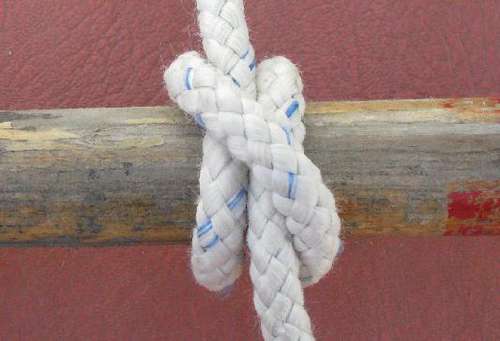Clove Hitch:
Uses: Used to tie two ends of a single line together such that they will secure something that
is unlikely to move much, such as furled sails or a bandage. (The knot lies flat when tied with
cloth and has been used for bandages for millennia.) With both ends tucked (slipped) it becomes
a good way to tie shoelaces. It is also used decoratively.
Instructions:
1) Tie a left-handed overhand knot and then a right-handed overhand knot or vice versa. (The
Boy Scout instructions for this knot are: right-over-left and under; left-over-right and through.)
2) Pull the knot tight.
NOTE: In Scouts this knot has a special meaning - it is also called the JOINING KNOT. This
is because it is the first knot you learn after joining scouts and because it joins items together
| Uses: The clove hitch is normally used for securing objects, such as tying a load on a trailer |
|
| or truck as a means of reliably securing one end of the rope, especially when used in |
|
| combination with a sheepshank to ensure tension is maintained. The clove hitch is the |
|
| starting knot in most lashing knots. It is very fast to tie and easy to adjust the knot for |
|
| length, making it useful at belay stations in rock climbing, where the belayer can maintain |
|
| 1) Tie a half hitch around a rail or post. |
|
| 2) Tie a second half hitch around the rail or post. |
|
| NOTE: It is formed from two half hitches around a rail or post where one is reversed or |
|
| opposed to the other. This opposition causes the knot to grip against itself when tension |
|
| is applied. It can be pre-formed in the middle of the rope, then slid over the end of a post. |
|
|
|
|
